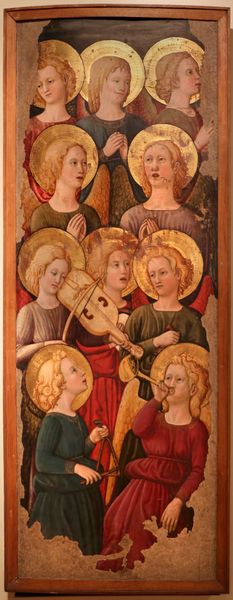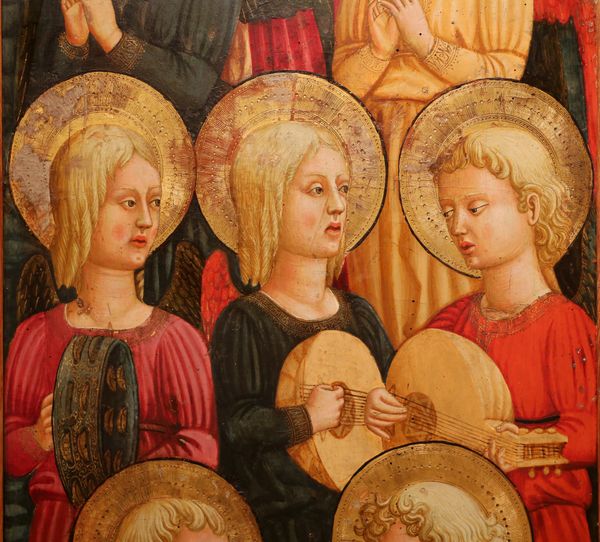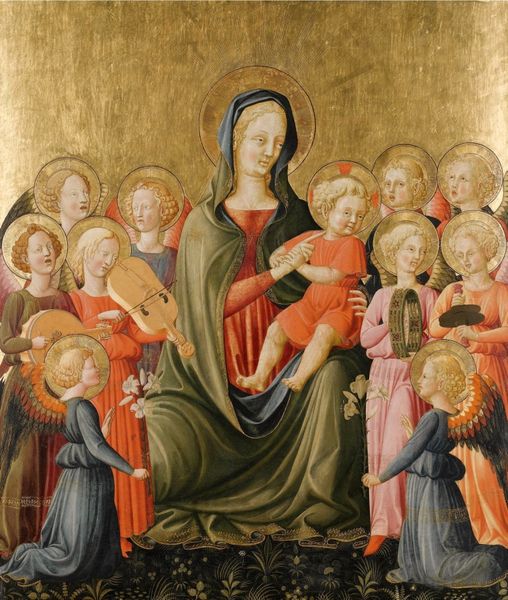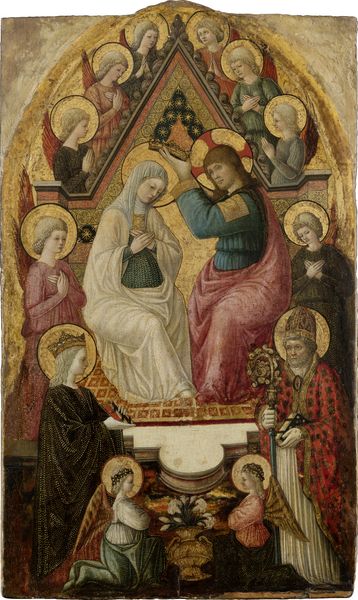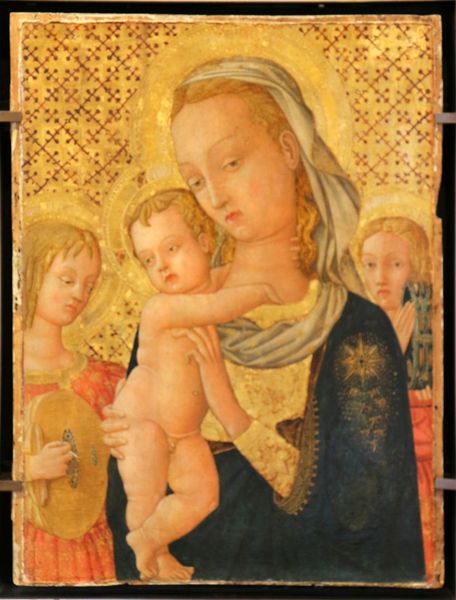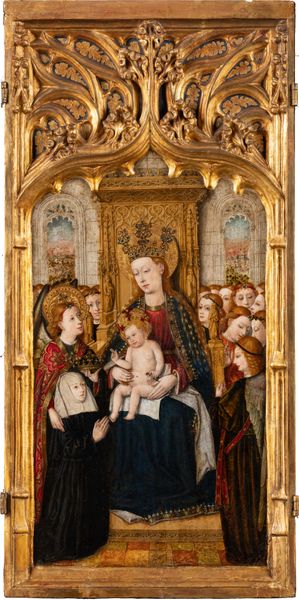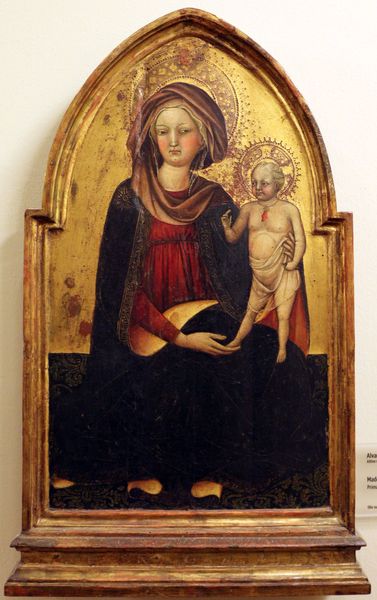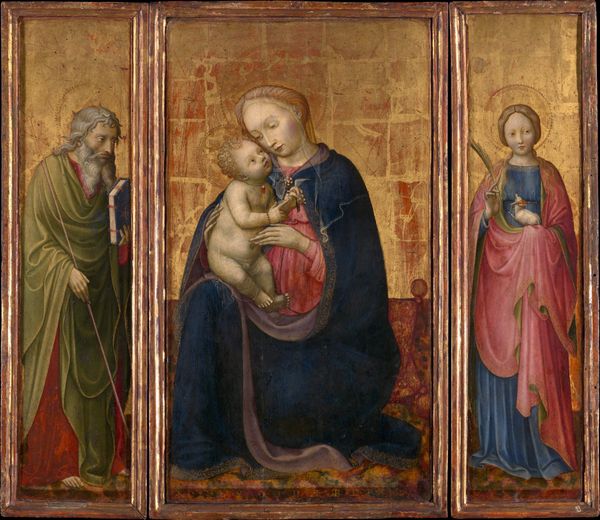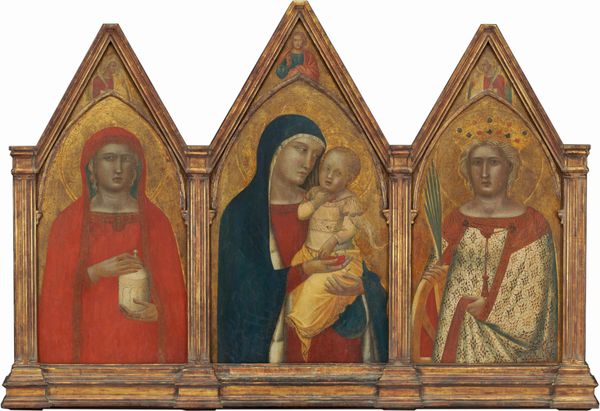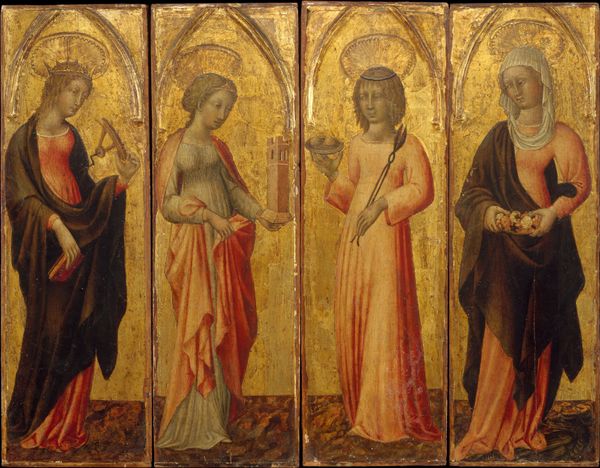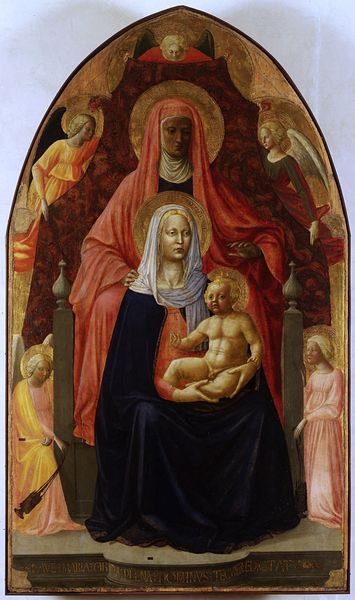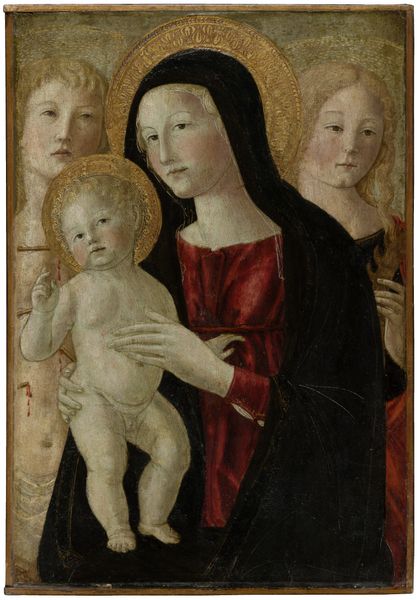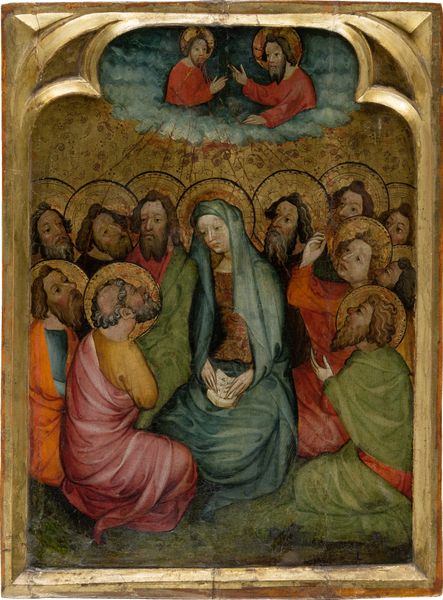
tempera, painting
#
portrait
#
tempera
#
painting
#
figuration
#
oil painting
#
history-painting
#
italian-renaissance
Copyright: Public domain
Lo Scheggia painted this panel of musical angels in the 1400s, using tempera paint on wood. The materials may seem straightforward, but they were anything but at the time. The process began with the carpenter, who would have carefully prepared the wood panel. The gesso ground was built up in layers, sanded to a smooth, ivory-like surface, which was then gilded with gold leaf. Finally, the artist would have applied pigments bound in egg yolk, carefully layering colors to create the figures. The luminous quality of the painting depends entirely on this alchemical combination of materials. The gold, for example, wouldn't just have been about aesthetic appeal; it symbolized divine light, transforming the painting into something more than just an image. The amount of skilled work involved, from carpentry to gilding to painting, meant that these artworks were costly and valued. The intense labor and precious materials all contributed to the cultural significance of the image. So, when we look at this panel, let’s appreciate how the material and making processes are integral to its meaning and effect.
Comments
No comments
Be the first to comment and join the conversation on the ultimate creative platform.
